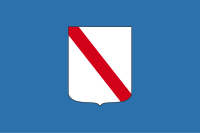Campania
Campania (/kæmˈpeɪniə/, also UK: /kæmˈpæniə/, US: /kɑːmˈpɑːniə/,[3][4] Italian: [kamˈpaːnja], Neapolitan: [kamˈbɑːnjə]) is an administrative region of Italy. Located on the south-western portion of the Italian Peninsula, with the Tyrrhenian Sea to the west, it includes the small Phlegraean Islands and Capri for administration as part of the region. As of 2018, the region has a population of around 5,820,000 people, making it the third-most-populous region in the country;[5] its total area of 13,590 km2 (5,247 sq mi) makes it the most densely populated region in Italy. Campania is the most productive region in southern Italy (and the 7th in the whole country) by GDP, with Naples' urban area being the 7th-most populous in the European Union.[6] The region is home to 10 of the 55 UNESCO sites in Italy, like Pompeii and Herculaneum, the Royal Palace of Caserta, the Amalfi Coast and the Historic Centre of Naples. Moreover, Mount Vesuvius is part of the UNESCO World Network of Biosphere Reserves.[7]
Campania | |
|---|---|
Region of Italy | |
 Coat of arms | |
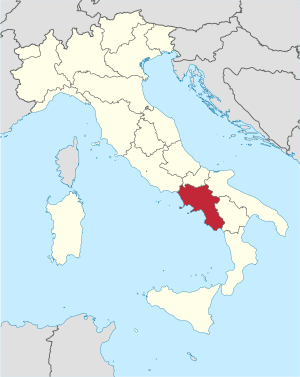 | |
| Country | Italy |
| Capital | Naples |
| Government | |
| • President | Vincenzo De Luca (PD) |
| Area | |
| • Total | 13,590 km2 (5,250 sq mi) |
| Population (30 November 2014) | |
| • Total | 5,869,029 |
| • Density | 430/km2 (1,100/sq mi) |
| Demonym(s) | English: Campanian Italian: Campano (man) Italian: Campana (woman) |
| Time zone | UTC+1 (CET) |
| • Summer (DST) | UTC+2 (CEST) |
| ISO 3166 code | IT-72 |
| GDP (nominal) | €106 billion (2017)[1] |
| GDP per capita | €18,200 (2017)[1] |
| HDI (2018) | 0.845[2] very high · 19th of 21 |
| NUTS Region | ITF |
| Website | www |
Coastal areas in the region were colonised by the Ancient Greeks between the 8th and 7th centuries BC, becoming part of the so-called Magna Græcia. The leading city of Campania at this time was Capua, with Naples being a Greek-speaking anomaly. Campania is rich in culture, especially in regard to gastronomy, music, architecture, and the presence of archaeological and ancient sites such as Pompeii, Herculaneum, Oplontis, Paestum, Aeclanum, Stabiae and Velia. The name of Campania is derived from Latin, as the Romans knew the region as Campania felix, which translates into English as "fertile countryside" or "happy countryside". The rich natural beauty of Campania makes it highly important in the tourism industry, with the city of Naples, the Amalfi Coast, Mount Vesuvius and the islands of Capri and Ischia continuing to be major attractions.[8]
History
Ancient tribes and Samnite Wars

The region today known as Campania was inhabited since the beginning of the 1st millennium BC, if not earlier, by Oscan-speaking Italic tribes, namely the Osci, the Opici, the Aurunci, the Ausones, the Sidicini, the Campanians (where the name of the region stems from) and the Lucanians (as the southern portion of the region, roughly corresponding to much of modern-day province of Salerno, was considered part of the ancient region of Lucania).[9][10] Between the 9th and 6th centuries BC, the Etruscans began establishing colonies in the Campanian Plain (inland territories of the modern provinces of Caserta and Naples), in the Agro Nocerino Sarnese and in the Agro Picentino (both in the modern-day province of Salerno), where they essentially replicated their Dodecapolis (twelve cities) political model, founding the cities of Hyria (modern-day Nola), Irnthi or Marcina (modern-day Salerno), Amina (modern-day Pontecagnano Faiano), Velcha, Velsu and Uri, in addition to assimilating in their urban-political domain also the pre-existing Oscan towns of Capua (modern-day Santa Maria Capua Vetere), Nuceria (modern-day comuni of Nocera Superiore and Nocera Inferiore), Suessula, Acerra, Ercolano, Pompeii, Stabiae and Sorrento.[11][12][13] Meanwhile, during the 8th century BC, Greek-speaking people from Euboea (in the Central Greece), known as Cumaeans, began to establish colonies themselves roughly around the coastal areas of the modern-day province of Naples and in the nearby islands founding, among others, the cities of Cumae, Pithekoūsai (modern-day Ischia) and Dicaearchia (modern-day Pozzuoli).[14]
.jpg)
At one point in history, a distinct group of Oscan-speaking tribes from the Samnium (in south-central Italy), the Samnites, moved down into Campania. Since the Samnites were more warlike than other Oscan populations, they easily took over the cities of Capua and Cumae, in an area which was one of the most prosperous and fertile in the Italian Peninsula at the time.[15] During the 340s BC, the Samnites were engaged in a war with the Roman Republic in a dispute known as the Samnite Wars, with Rome claiming the rich pastures of northern Campania during the First Samnite War.[16]
As the majority of Southern Italy was under Roman control at the time, the sole major remaining independent settlement in the region was the Greek colony of Neapolis, and when the city was eventually captured by the Samnites, the Neapolitan Greeks were left with no option but to call on the Romans, with whom they established an alliance, setting off the Second Samnite War.[15] The Roman consul Quintus Publilius Filo recaptured Neapolis by 326 BC and allowed it to remain a Greek city with some autonomy as a civitas foederata while strongly aligned with Rome.[17] The Second Samnite War ended with the Romans controlling southern Campania and additional regions further to the south.[16]
Roman period
Campania was a full-fledged part of the Roman Republic by the end of the 4th century BC, valued for its pastures and rich countryside. Naples, with its Greek language and customs, made it a centre of Hellenistic culture for the Romans, creating the first traces of Greco-Roman culture.[18] During the Pyrrhic War in 275 BC, the Battle of Beneventum took place in Campania in the Samnite city of Maleventum, in which the Romans, led by the consul Curius Dentatus, were victorious. They renamed it Beneventum (modern day Benevento), which grew in stature until it was second only to Capua in southern Italy.[19] During the Second Punic War in 216 BC, Capua, in a bid for equality with Rome, allied with Carthage.[20] The rebellious Capuans were isolated from the rest of Campania, which remained allies of Rome. Naples resisted Hannibal due to the imposing walls.[18] Capua was eventually starved into submission in the Roman retaking of 211 BC, and the Romans were victorious.[20]
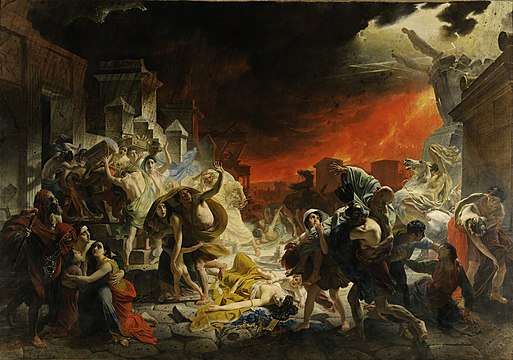
With the initial exception of Naples, the region adopted Latin as official language, in that sense gradually replacing the native Oscan and the Greek and the Etruscan still talked respectively in their colonies of the region,[21][22][23] subsequently becoming fully Romanised.[24][25] As part of the Roman Empire, Campania, with Latium, formed the most important region of the Augustan divisions of Italia, the Regio I Latium et Campania; Campania was one of the main areas for granary.[25] In ancient times Misenum (modern 'Miseno'), at the extreme northern end of the bay of Naples, was the largest base of the Roman navy, since its port (Portus Julius) was the base of the Classis Misenensis, the most important Roman fleet. It was first established as a naval base in 27 BC by Marcus Agrippa, the right-hand man of the emperor Augustus. Roman Emperors chose Campania as a holiday destination, among them Claudius and Tiberius, the latter of whom is infamously linked to the island of Capri.[18] It was also during this period that Christianity came to Campania. Two of the apostles, St. Peter and St. Paul, are said to have preached in the city of Naples, and there were also several martyrs during this time.[26] Unfortunately, the period of relative calm was violently interrupted by the epic eruption of Mount Vesuvius in 79 which buried the cities of Pompeii and Herculaneum.[27] With the Decline of the Roman Empire, its last emperor, Romulus Augustus, was put in a manor house prison near Castel dell'Ovo, Naples, in 476, ushering in the beginning of the Middle Ages and a period of uncertainty in regard to the future of the area.[18]
Feudalism in the Middle Ages
The area had many duchies and principalities during the Middle Ages, in the hands of the Byzantine Empire (also referred to as the Eastern Roman Empire) and the Lombards. Under the Normans, the smaller independent states were brought together as part of the Kingdom of Sicily, before the mainland broke away to form the Kingdom of Naples. It was during this period that elements of Spanish, French and Aragonese culture were introduced to Campania. Allegiances with the Muslim Saracens were made in 836, and the Arabs were requested to repel the siege of Lombard troops coming from the neighbouring Duchy of Benevento. However, during the 850s, Muhammad I Abu 'l-Abbas led the conquest of the city, and managed to sack it and take huge amount of its wealth.[28][29]
The Kingdom
Norman to Angevin
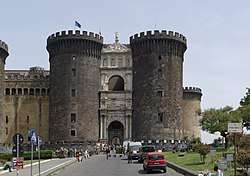
After a period as a Norman kingdom, the Kingdom of Sicily passed to the Hohenstaufens, who were a powerful Germanic royal house of Swabian origins.[30] The University of Naples Federico II was founded by Frederick II in the city, the oldest state university in the world, making Naples the intellectual centre of the kingdom.[31] Conflict between the Hohenstaufen house and the Papacy, led in 1266 to Pope Innocent IV crowning Angevin Dynasty duke Charles I as the king.[32] Charles officially moved the capital from Palermo to Naples where he resided at the Castel Nuovo.[33] During this period, much Gothic architecture sprang up around Naples, including the Naples Cathedral, the main church of the city.[34]
In 1281, with the advent of the Sicilian Vespers, the kingdom split in half. The Angevin Kingdom of Naples included the southern part of the Italian peninsula, while the island of Sicily became the Aragonese Kingdom of Sicily.[32] The wars continued until the peace of Caltabellotta in 1302, which saw Frederick III recognised as king of the Isle of Sicily, while Charles II was recognised as the king of Naples by Pope Boniface VIII.[32] Despite the split, Naples grew in importance, attracting Pisan and Genoese merchants,[35] Tuscan bankers, and with them some of the most championed Renaissance artists of the time, such as Boccaccio, Petrarch and Giotto.[36] Alfonso I conquered Naples after his victory against the last Angevin king, René, and Naples was unified for a brief period with Sicily again.[37]
Aragonese to Bourbon
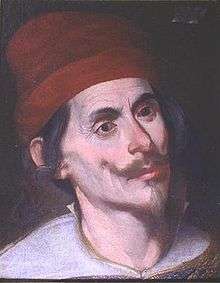
Sicily and Naples were separated in 1458 but remained as dependencies of Aragon under Ferrante.[38] The new dynasty enhanced Naples' commerce by establishing relations with the Iberian peninsula. Naples also became a centre of the Renaissance, with artists such as Laurana, da Messina, Sannazzaro and Poliziano arriving in the city.[39] During 1501 Naples came under direct rule from France at the time of Louis XII, as Neapolitan king Frederick was taken as a prisoner to France; this lasted four years.[40] Spain won Naples at the Battle of Garigliano and, as a result, Naples then became part of the Spanish Empire throughout the entire Habsburg Spain period.[40] The Spanish sent viceroys to Naples to directly deal with local issues: the most important of which was Pedro Álvarez de Toledo, who was responsible for considerable social, economic and urban progress in the city; he also supported the Inquisition.[41]

During this period Naples became Europe's second largest city after Paris.[42] During the Baroque era it was home to artists including Caravaggio, Rosa and Bernini; philosophers such as Telesio, Bruno, Campanella and Vico; and writers such as Battista Marino. A revolution led by local fisherman Masaniello saw the creation of a brief independent Neapolitan Republic, though this lasted only a few months before Spanish rule was regained.[40] Finally, by 1714, the Spanish ceased to rule Naples as a result of the War of the Spanish Succession; it was the Austrian Charles VI who ruled from Vienna, similarly, with viceroys.[43] However, the War of the Polish Succession saw the Spanish regain Sicily and Naples as part of a personal union, which in the Treaty of Vienna were recognised as independent under a cadet branch of the Spanish Bourbons in 1738 under Charles VII.[44]
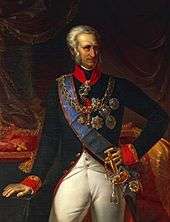
During the time of Ferdinand IV, the French Revolution made its way to Naples: Horatio Nelson, an ally of the Bourbons, even arrived in the city in 1798 to warn against it. However, Ferdinand was forced to retreat and fled to Palermo, where he was protected by a British fleet.[45] Naples' lower classes (the lazzaroni) were pious and Royalist, favouring the Bourbons; in the mêlée that followed, they fought the Neapolitan pro-Republican aristocracy, causing a civil war.[45] The Republicans conquered Castel Sant'Elmo and proclaimed a Parthenopaean Republic, secured by the French Army.[45] A counter-revolutionary religious army of lazzaroni under Fabrizio Ruffo was raised; they had great success and the French surrendered the Neapolitan castles and were allowed to sail back to Toulon.[45]
Ferdinand IV was restored as king; however, after only seven years Napoleon conquered the kingdom and instated Bonapartist kings including his brother Joseph Bonaparte.[46] With the help of the Austrian Empire and allies, the Bonapartists were defeated in the Neapolitan War and Bourbon Ferdinand IV once again regained the throne and the kingdom.[46] The Congress of Vienna in 1815 saw the kingdoms of Naples and Sicily combined to form the Two Sicilies,[46] with Naples as the capital city. Naples became the first city on the Italian peninsula to have a railway in 1839,[47] there were many factories throughout the kingdom making it a highly important trade centre.[48]
World War II, "Salerno Capital"
In September 1943, Salerno was the scene of the Operation Avalanche and suffered a great deal of damage. From 12 February to 17 July 1944, it hosted the Government of Marshal Pietro Badoglio. In those months Salerno was the temporary "Capital of the Kingdom of Italy", and the King Victor Emmanuel III lived in a mansion in its outskirts. Salerno received the first "Tricolore" in an official ceremony on 7 January 2012 from the premier Mario Monti, to celebrate the glorious story of Italy and its old capitals.
Geography

Campania has an area of 13,590 km2 (5,247 sq mi) and a coastline of 350 km (217 mi) on the Tyrrhenian Sea. Campania is famous for its gulfs (Naples, Salerno and Policastro) as well as for three islands (Capri, Ischia and Procida).
Four other regions border Campania; Lazio to the northwest, Molise to the north, Apulia (Puglia) to the northeast and Basilicata to the east.
The mountainous interior is fragmented into several massifs, rarely reaching 2,000 metres (Miletto of 2,050 m), whereas close to the coast there are volcanic massifs: Vesuvio (1,277 m) and Campi Flegrei.
The climate is typically Mediterranean along the coast, whereas in the inner zones it is more continental, with low temperatures in winter. 51% of the total area is hilly, 34% mountainous and the remaining 15% is made up of plains. There is a high seismic risk in the area of the region.
Economy
The agro-food industry is one of the main pillars of industry of Campania. The organisation of the sector is improving and leading to higher levels of quality and salaries. Campania mainly produces fruit and vegetables, but has also expanded its production of flowers grown in greenhouses, becoming one of the leading regions of the sector in Italy. The value added of this sector represents around 6.5% of the total value added of the region, equalling €213.7 million. Campania produces over 50% of Italy's nuts and is also the leader in the production of tomatoes, which reaches 1.5 million tonnes a year. A weak point, however, for the region's agriculture is the very reduced size of farms, equal to 3.53 hectares. Animal breeding is widespread (it was done in 70,278 farms in 2000) and the milk produced is used to process typical products, such as mozzarella.
Olive trees, mainly of the varieties Carpellese (PDO designated),[49] Cornia (Val di Cornia DOC), Frantoio, Leccino, Ogliarola Barese, Olivella, Ortice, Pisciottana (Also Ogliastrina or Olivo dell'Ascea),[50] Ravece (also known as Rotondello),[51] and Salella,[52] covers over 74,604 hectares (184,350 acres) of the agricultural land, together with the production of fruit, contributing €620.6 million to the economy. Wine production has increased as well as the quality of the wine.[53]
The region has a dense network of road and motorways, a system of maritime connections and an airport (Naples Airport), which connect it rapidly to the rest of the Country. Campania has a series of historical problems and internal contrasts, although they are improving. The regional capital, Naples, one of the most populated cities in Italy, still represents the centre of regional life. The port connects the region with the whole Mediterranean basin, and brings tourists to the archaeological sites, the cities of art (Naples and Caserta), to the coastal areas and to the islands. The services sector makes up for 78% of the region's gross domestic product.[53]
The GDP per capita of Campania is the highest among the regions of South Italy, yet it is only 66.7% of the Italian average, which highlights the steep economic gap between the North and the South of Italy. The situation of Campania's economy is considered "anomalous", as it is believed to have a large potential not properly exploited, as well as high rates of unemployment and of submerged economy. It was speculated that one factor could have been a failure of Campania to connect with the economy of the unitary Italian state, while another factor is its peripheral position too distant from the developed central areas of Europe.[54]
Heavy industry used to be concentrated in the Naples metropolitan area, in which the largest industrial area was Bagnoli, a suburb located North of the city. Bagnoli enjoyed a favourable logistic position due its proximity to the sea and to an industrial harbour, and included Steel factories that were among the largest in Europe. The steel factories operated since 1905 for about 80 years, but by the end of the sixties, all industries of Bagnoli area gradually started to lose competitiveness, and the steel factories were definitively closed in 1991. At the beginning of the 70s, plans for the de-industrialization of the area were presented, as it was perceived that the causes of competitiveness loss were impossible to remove. In 1970 the City Council decided that 30% of space of the industrial should be dismantled and turned into public parks. In 1976, a definitive report concluded that the lack of competitiveness was due to "impossibility to expand the facilities because of lack of space".[55][56] The metropolitan area of Naples is limited by two dangerous areas, the Mount Vesuvius on the South, and supervolcano Campi Flegrei on the North, leaving little space in proximity of the sea.
Some factors may contribute in keeping the economy less competitive or less flexible compared to Northern Italian and European regions, among them, a larger public administration sector (which accounted for 20.4% of the whole economy in 2013, while in Italy the figure is 13.6) suggesting a too large number of public employees or white collars.[57] The number of lawyers is 5.7 every 1000, by comparison in Northern region Trentino-Alto Adige the number is 1.7.[58] Because of a less developed economy, Campania may have suffered less the negative effects of recent economic cycles.[59]
Sea-based activity accounts about 3.9% of the economy, that includes port movements of goods and passengers and sea transportation, as well as a sizable seaside tourism economy. There is a massive automotive industrial production, focused on high-quality models of brands Alfa Romeo, in facilities located in Pomigliano d'Arco in the Naples metropolitan area and in Cassino. There is also a significant aerospace industry. A Mars mission named ExoMars in 2016 had a major part of its technology designed in Naples.[60]
The unemployment rate stood at 20.4% in 2018 and was one of the highest in Italy.[61][62]
| Year | 2006 | 2007 | 2008 | 2009 | 2010 | 2011 | 2012 | 2013 | 2014 | 2015 | 2016 | 2017 | 2018 |
|---|---|---|---|---|---|---|---|---|---|---|---|---|---|
| unemployment rate (in %) |
12.8% | 11.2% | 12.5% | 12.9% | 13.9% | 15.4% | 19.2% | 21.5% | 21.7% | 19.8% | 20.4% | 20.9% | 20.4% |
Demographics
| Year | Pop. | ±% |
|---|---|---|
| 1861 | 2,402,000 | — |
| 1871 | 2,520,000 | +4.9% |
| 1881 | 2,660,000 | +5.6% |
| 1901 | 2,914,000 | +9.5% |
| 1911 | 3,102,000 | +6.5% |
| 1921 | 3,343,000 | +7.8% |
| 1931 | 3,509,000 | +5.0% |
| 1936 | 3,697,000 | +5.4% |
| 1951 | 4,346,000 | +17.6% |
| 1961 | 4,761,000 | +9.5% |
| 1971 | 5,059,000 | +6.3% |
| 1981 | 5,463,000 | +8.0% |
| 1991 | 5,630,000 | +3.1% |
| 2001 | 5,702,000 | +1.3% |
| 2011 | 5,834,000 | +2.3% |
| 2017 | 5,839,084 | +0.1% |
| Source: ISTAT 2001, 2011, 2014 | ||
The region, with a population of over 5.8 million inhabitants, is divided into five provinces: Naples, Benevento, Avellino, Caserta and Salerno. Over half of the population is resident in the province of Naples, where there is a population density of 2,626 inhabitants per km2. Within the province, the highest density can be found along the coast, where it reaches 13,000 inhabitants per km2 in the city of Portici. The region, which was characterised until recently by an acute economic contrast between internal and coastal areas, has shown an improvement in the last decade thanks to the development of the provinces of Benevento and Avellino. At the same time, the provinces of Naples, Caserta and in part Salerno, have developed a variety of activities connected to advanced types of services.[63]
Unlike central and northern Italy, in the last decade the region of Campania has not attracted large numbers of immigrants. The Italian national institute of statistics ISTAT estimated in January 2007 that 98,052 foreign-born immigrants live in Campania, equal to 1.7% of the total regional population.[64] Part of the reason for this is in recent times, there have been more employment opportunities in northern regions than in the Southern Italian regions.
Government and politics
The Politics of Campania, takes place in a framework of a presidential representative democracy, whereby the President of Regional Government is the head of government, and of a pluriform multi-party system. Executive power is exercised by the Regional Government. Legislative power is vested in both the government and the Regional Council.
The Regional Council of Campania (Consiglio Regionale della Campania) is composed of 60 members, of which 47 are elected in provincial constituencies with proportional representation, 12 from the so-called "regional list" of the elected President and the last one is for the candidate for President who comes second, who usually becomes the leader of the opposition in the Council. If a coalition wins more than 55% of the vote, only 6 candidates from the "regional list" will be elected and the number of those elected in provincial constituencies will be 53.[65]
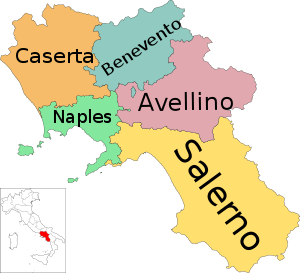
Administrative divisions
Campania is divided into four provinces and one metropolitan city:
| Province | Area (km2) | Population | Density (inhabitants/km2) |
|---|---|---|---|
| Province of Avellino | 2,792 | 427,310 | 153 |
| Province of Benevento | 2,071 | 283,393 | 136.83 |
| Province of Caserta | 2,639 | 906,596 | 343.54 |
| Province of Salerno | 4,923 | 1,092,349 | 222.11 |
| Metropolitan City of Naples | 1,171 | 3,052,763 | 2,606.97 |
Culture
Cuisine
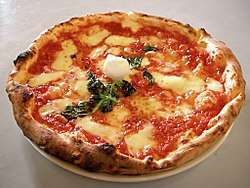
Campanian cuisine varies within the region. While Neapolitan dishes centre on seafood, Casertan and Aversan ones rely more on fresh vegetables and cheeses. The cuisine from Sorrento combines the culinary traditions from both Naples and Salerno.
Pizza was conceived in Naples.[66]
Spaghetti is also a well-known dish from southern Italy and Campania.
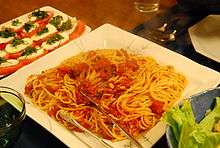
Campania produces wines including Lacryma Christi, Fiano, Aglianico, Greco di Tufo, Pere 'e palomma, Ischitano, Taburno, Solopaca, and Taurasi. The cheeses of Campania consist of Mozzarella di Bufala (buffalo mozzarella) (mozzarella made from buffalo milk), fiordilatte ("flower of milk") a mozzarella made from cow's milk, ricotta from sheep or buffalo milk, provolone from cow milk, and caciotta made from goat milk. Buffalo are bred in Salerno and Caserta.
Several different cakes and pies are made in Campania. Pastiera pie is made during Easter. Casatiello and tortano are Easter bread-cakes made by adding lard or oil and various types of cheese to bread dough and garnishing it with slices of salami. Babà cake is a well known Neapolitan delicacy, best served with Rum or limoncello (a liqueur invented in the Sorrento peninsula). It is an old Austrian cake, which arrived in Campania during the Austrian domination of the Kingdom of Two Sicilies and was modified there to become a "walking cake" for citizens always in a hurry for work and other pursuits. Sfogliatella is another cake from the Amalfi Coast, as is Zeppole, traditionally eaten on Saint Joseph's day. Struffoli, little balls fried dough dipped in honey, are enjoyed during the Christmas holidays.
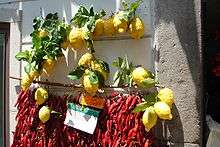
Another Campanian dish is the so-called Russian salad (which is based on similar dishes from France), made of potatoes in mayonnaise garnished with shrimp and vegetables in vinegar. Russians call this same dish Olivier Salad, and Germans call it Italian salad. Another French-derived dish is "gattò" or "gâteau di patate" (oven-baked pie made of boiled potatoes). As with the Russian salad, Campania is home to popular seafood-based dishes, such as "insalata di mare" (seafood salad), "zuppa di polpo" (octopus soup), and "zuppa di cozze" (mussel soup). Other regional seafood dishes include "frittelle di mare" (fritters with seaweed), made with edible poseidonia algae, "triglie al cartoccio" (red mullet in the bag), and "alici marinate" (fresh anchovies in olive oil). The island of Ischia is known for its fish dishes, as well as for cooked rabbit. Campania is also home to the lemons of Sorrento. Rapini (or Broccoli rabe), known locally as friarielli, are often used in the regional cooking. Campania also produces many nuts, especially in the area of Avellino, Salerno and Benevento. Hazelnut production is especially relevant in the province of Avellino – in Spanish, in Portuguese and in Occitan the hazelnut is respectively called avellana, avelã and avelano, after the city of Avella. That is also the case of ancient Italian avellana, which is however not in use anymore.
Ancient, medieval, and early arts
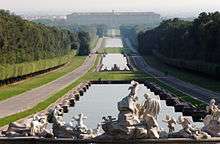
The region of Campania is rich with a vast array of culture and history. Since the Greek colony of Elea, now Velia, Campania was home to philosophers of the Pre-Socratic philosophy school, such as Parmenides and Zeno of Elea, who came to prominence around 490–480 BC. The Latin poet Vergil (70 BC–19 BC) settled in Naples in his late life: parts of his epic poem Aeneid are located in Campania. The ancient scientist Pliny the Elder studied Mount Vesuvius, and died after being poisoned and killed by gas emitted from the volcano during the 79 AD eruption.
Romulus Augustus, the last emperor of the Western Roman Empire, died as a prisoner of the German general Odoacer at Naples around 500. In the Middle Ages, the artist Giotto made some frescoes in Castel Nuovo. These works of art were subsequently destroyed by an earthquake.
By the end of the Middle Ages, the medical school of Salerno, which combined ancient Roman and Greek medicine with Arab medicine, was known throughout Europe and its methods were adopted across the continent. Some have suggested that this may have been one of the first universities in Europe. Boccaccio, the Tuscan poet, visited Naples on various occasions, and in the Decameron described it as a dissolute city. He also wrote a love story involving a noble woman close to the King of Naples.
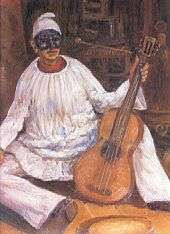
In 1570, the Spanish writer Miguel de Cervantes, who wrote the romance novel Don Quixote, served as a Spanish soldier for a period in Naples. Poet Torquato Tasso was born in Sorrento in 1575. Years earlier in 1558, the first modern description and studies of the "camera obscura" ("dark chamber"), were established in Italy by Giovanni Battista della Porta in his Magiae Naturalis.
Philosopher Giordano Bruno was born in Nola. He was the first to theorize infinite suns and infinite worlds in the universe. He was burnt in Rome by the Spanish Inquisition in 1600. Later, in c. 1606, the Baroque painter Caravaggio established his studio in Naples. Italian Baroque architect Cosimo Fanzago from Bergamo also decided to move to Naples.
In the 18th century, Naples was the last city to be visited by philosophers who created the "Grand Tour" which was the big touring voyage to visit all the important cultural sites of the European continent. Italian architect Luigi Vanvitelli son of Dutch architect Kaspar van Wittel built the Kingdom Palace in Caserta in c. 1750. He contributed to the construction of many neoclassic-style palaces in which the nobles of Naples spent their holidays. These palaces are now known worldwide as "Ville Vesuviane".
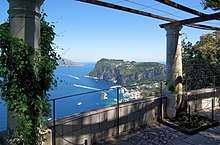
Raimondo di Sangro, prince of Sansevero, was a scientist and one of the last alchemists. Around this time, in 1786, German writer Goethe visited Campania and Naples. German archaeologist Johann Joachim Winckelmann also visited Naples, Paestum, Herculaneum and Pompeii in 1748 and later, studying how archaeological surveys were conducted in the kingdom of Naples. He was one of the first to study drawings, statues, stones, and ancient burned scrolls made of papyrus found in the excavations of the city of Herculaneum. Archaeological excavations in Pompeii were initiated by King Charles III of Naples in 1748. He issued the first modern laws in Europe to protect, defend and preserve archaeological sites. Neapolitan musicians of that period include Niccolò Antonio Zingarelli and Giovanni Paisiello.
Musician Gioachino Rossini lived for several years in Naples, where he wrote numerous compositions. Italian poet and writer Giacomo Leopardi established his home in Naples and Torre del Greco, remaining there at the end of his brief young life. He died at Naples in 1837. The first volcano observatory, the Vesuvius Observatory, was founded in Naples in 1841. Geologist Giuseppe Mercalli, born in Milan in 1850, was a director of the Vesuvius Observatory.
In February 1851, British statesman William Ewart Gladstone was allowed to visit the prison where Giacomo Lacaita, legal adviser to the British embassy, was imprisoned by the Neapolitan government, along with other political dissidents.[67] He deplored their condition, and in April and July published two Letters to the Earl of Aberdeen against the Neapolitan government, followed by An Examination of the Official Reply of the Neapolitan Government in 1852.[68] His pamphlets may have contributed to the cause of the unification of Italy in 1861.
French writer Alexandre Dumas, père was directly involved in the process of the Unification of Italy, and sojourned two or three years in Naples, where he wrote several historical novels regarding that city. He was also a known newspaper correspondent. Francesco de Sanctis, writer, politician and twice Minister of Instruction after the re-unification of Italy in 1861, was born in Morra De Sanctis near Avellino.
German scientist Anton Dohrn founded in Naples the first public aquarium in the world and laboratory for the study of the sea, known as Maritime Zoological Station. The Astronomic Observatory of Capodimonte was founded by King Joachim Murat, in 1816. The observatory now hosts the Italian Laboratory of Astrophysics. Doctors and surgeons Antonio Cardarelli and Giuseppe Moscati were representatives of medical studies in Naples.
Contemporary and modern arts
The so-called "School of Posillipo" and "School of Resina", dating from the late 19th to early 20th centuries, included painters such as Giacinto Gigante, Federico Cortese, Domenico Morelli, Saverio Altamura, Giuseppe De Nittis, Vincenzo Gemito, Antonio Mancini, Raffaello Pagliaccetti.
Amongst the painters who inspired directly these schools, are Salvator Rosa, Pierre Jacques-Antoine Volaire, Anton Sminck van Pitloo who spent his last years in Naples. Opera singer Enrico Caruso was also a native of Naples. Russian revolutionary leader Vladimir Lenin lived for a period in Capri. In the 20th century, the music genre called Neapolitan song became popular worldwide, with songs such as "O sole mio", "Funiculì, funiculà", "O surdato nnamurato", "Torna a Surriento", "Guapparia, "Santa Lucia", "Reginella", "Marechiaro", "Spingule Francese".
Mathematician Renato Caccioppoli, nephew of the Russian anarchic revolutionary Mikhail Bakunin, was born in Naples. The first President of the Italian Republic in 1946 (with a pro-tempore mandate of six months) was Enrico De Nicola from Torre del Greco. Campania is also home to the former Prime Minister and 6th President of the Republic Giovanni Leone, as well as the 11th President, Giorgio Napolitano.
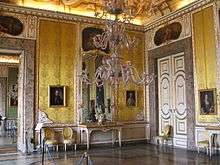
The 20th century's best known philosopher and literate in Naples was Benedetto Croce, known for his studies in aesthetics, ethics, logic, economy, history, politics.
Neapolitan artists, actors, playwrights, and showmen included Eduardo De Filippo and Peppino De Filippo, and their sister Titina De Filippo. Totò (byname of Antonio de Curtis) was one of the most important comedians in Naples in the 20th century. He is also known for the song "Malafemmena".
Pop artist Andy Warhol created two famous paintings of the 1980 Irpinia earthquake: Fate presto and Vesuvius. Both originals are hosted in the exhibit Terrae Motus in the Palace of Caserta.
Oscar–winning actress Sophia Loren grew up in Pozzuoli.
Oscar and David-winning[69] film producer Dino De Laurentiis was born in Torre Annunziata. One of his grandchildren is Food Network personality Giada De Laurentiis.
Contemporary Campanian writers include Curzio Malaparte and Domenico Rea.
20th- and 21st-century Campanian actors and directors include Francesco Rosi, Iaia Forte, Pappi Corsicato, Teresa De Sio, Lello Arena, Massimo Troisi and director Gabriele Salvatores.
Modern Italian singers and musicians from Campania include Peppino di Capri, Renato Carosone, Edoardo Bennato, Eugenio Bennato, Mario Merola, Sergio Bruni, Aurelio Fierro, Roberto Murolo, Tony Tammaro, Teresa De Sio, Eduardo De Crescenzo, Alan Sorrenti, Toni Esposito, Tullio De Piscopo, Massimo Ranieri, Pino Daniele, James Senese and his group Napoli Centrale, Enzo Avitabile, Enzo Gragnaniello, Nino D'Angelo, Gigi D'Alessio, 99 Posse, Almamegretta, Bisca, 24 Grana.
Artists who directed movies about Naples or actors who played in movies in Campania, or interpreted Neapolitans on-screen, include Vittorio De Sica, Nanni Loi, Domenico Modugno, Renzo Arbore, Lina Wertmüller, Mario Lanza as Caruso, Clark Gable in "It Started in Naples", Jack Lemmon in the movies "Maccheroni" (which co-starred Marcello Mastroianni) and "Avanti!".
The international Giffoni Film Festival, established in 1971, is the first and most important festival for a young public.
Sports
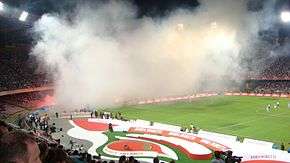
Campania is home to several national football, water polo, volleyball, basketball and tennis clubs.
The fencing school in Naples is the oldest in the country and the only school in Italy in which a swordsman can acquire the title "master of swords", which allows him or her to teach the art of fencing.
The "Circolo Savoia" and "Canottieri Napoli" sailing clubs are among the oldest in Italy and are known for their regattas. These are also home of the main water polo teams in the city. Many sailors from Naples and Campania participate as crew in the America's Cup sailing competition.
Rowers Giuseppe Abbagnale and Carmine Abbagnale were born in Castellammare di Stabia: they were four times rowing world champions and Olympic gold medalists.
The football teams in Campania include:
- S.S.C. Napoli playing in Serie A, and the only team in the south of Italy to have won the Serie A title
- Benevento Calcio playing in Serie B
- U.S. Avellino 1912 playing in Serie B
- U.S. Salernitana 1919 playing in Serie B
- Casertana F.C. playing in Serie C
- S.S. Juve Stabia playing in Serie C
- Paganese Calcio 1926 playing in Serie C
References
- "Regional GDP per capita ranged from 31% to 626% of the EU average in 2017" (Press release). ec.europa.eu. Retrieved 2 September 2019.
- "Sub-national HDI - Area Database - Global Data Lab". hdi.globaldatalab.org. Retrieved 13 September 2018.
- "Campania". Collins English Dictionary. HarperCollins. Retrieved 6 May 2019.
- Upton, Clive; Kretzschmar, Jr., William A. (2017). The Routledge Dictionary of Pronunciation for Current English (2nd ed.). Routledge. p. 183. ISBN 978-1-138-12566-7.
- demo.istat.it (ed.). "Bilancio demografico Anno 2018 (dati provvisori)". Retrieved 30 April 2015.
- "Statistics on European cities - Statistics Explained". ec.europa.eu. Retrieved 20 April 2020.
- "UNESCO - MAB Biosphere Reserves Directory". www.unesco.org. Retrieved 20 April 2020.
- "Campania: Gateway to Southern Italy". LifeInItaly.com. 7 October 2007. Retrieved 22 July 2009.
- (Giacomo Devoto, Gli antichi italici, Firenze, Vallecchi, 1931, p.118).
- "Italia Antiqua – XV, Campania". InStoria.it. 7 October 2007. Retrieved 22 July 2009.
- Etruria campana
- Strabo, Geographica, V (Italia), 4.3.
- Francesco Belsito (2013). Storia di Nocera. Monumenti, personaggi, leggende. Angri, Gaia.
- "Campania: History". Interteam.it. 7 October 2007. Archived from the original on 5 May 2005.
- "The Samnite Wars". UNRV.com. 7 October 2007. Retrieved 22 July 2009.
- "Ancient Times – 1st millennium B.C." Michael Vigorita. 7 October 2007. Retrieved 22 July 2009.
- "Roman Naples". Faculty.ed.umuc.du. 7 October 2007. Archived from the original on 29 June 2009. Retrieved 22 July 2009.
- "Antic Naples". Naples.Rome-in-Italy.com. 8 January 2008. Archived from the original on 25 December 2008. Retrieved 22 July 2009.
- Oakley, Stephen P (1971). A Commentary on Livy, Books VI-X. Oxford University Press. p. 43. ISBN 0-19-927143-7.
- "Second Punic War: Second Period, From The Revolt Of Capua To The Battle Of The Metaurus – b.C. 215-207". Roman-Empire.info. 8 January 2008. Archived from the original on 12 October 2009. Retrieved 22 July 2009.
- Freeman, Philip (1999). The Survival of Etruscan. Page 82: "Oscan graffiti on the walls of Pompeii show that non-Latin languages could thrive in urban locations in Italy well into the 1st century A.D."
- McDonald, K. L. (2017). "Fragmentary ancient languages as "bad data": towards a methodology for investigating multilingualism in epigraphic sources." Pages 4-6
- Schrijver, Peter. Oscan love of Rome. Page 2.
- Lomas, Kathryn, "The Hellenization of Italy", in Powell, Anton. The Greek World. Page 354.
- "Campania: A Little History". Emmeti.it. 8 January 2008. Retrieved 22 July 2009.
- Herbermann, Charles, ed. (1913). . Catholic Encyclopedia. New York: Robert Appleton Company.
- "Secrets of the Dead: Pompeii and Herculaneum". Channel4.com. 8 January 2008. Retrieved 22 July 2009.
- Magnusson & Goring 1990
- Hilmar C. Krueger. "The Italian Cities and the Arabs before 1095" in A History of the Crusades: The First Hundred Years, Vol.I. Kenneth Meyer Setton, Marshall W. Baldwin (eds., 1955). University of Pennsylvania Press. p.48.
- "Swabian Naples". Faculty.ed.umuc.edu. 7 October 2007. Archived from the original on 1 May 2009. Retrieved 22 July 2009.
- "Italy: PhD Scholarships in Various Fields at University of Naples-Federico II". ScholarshipNet.info. 7 October 2007. Archived from the original on 30 January 2009. Retrieved 22 July 2009.
- "Sicilian History". Dieli.net. 7 October 2007. Retrieved 22 July 2009.
- "Naples – Castel Nuovo". PlanetWare.com. 7 October 2007. Retrieved 22 July 2009.
- Bruzelius, Caroline (1991). ""ad modum franciae": Charles of Anjou and Gothic Architecture in the Kingdom of Sicily". The Journal of the Society of Architectural Historians. 50 (4): 402–420. doi:10.2307/990664. JSTOR 990664.
- Constable, Olivia Remie (2002). Housing the Stranger in the Mediterranean World: Lodging, Trade, and Travel. Humana Press. ISBN 1-58829-171-5.
- "Angioino Castle, Naples". Naples-City.info. 7 October 2007. Retrieved 22 July 2009.
- "Aragonese Overseas Expansion, 1282–1479". Zum.de. 7 October 2007. Retrieved 22 July 2009.
- "Ferrante of Naples: the statecraft of a Renaissance prince". Questia.com. 7 October 2007. Retrieved 22 July 2009.
- "Naples Middle-Ages". Naples.Rome-in-Italy.com. 7 October 2007. Archived from the original on 10 April 2008. Retrieved 22 July 2009.
- "Spanish acquisition of Naples". Britannica.com. 7 October 2007.
- "Don Pedro de Toledo". Faculty.ed.umuc.edu. 7 October 2007. Archived from the original on 9 May 2008. Retrieved 22 July 2009.
- "Naples Through the Ages". Fodors.com. 7 October 2007. Archived from the original on 20 December 2016. Retrieved 22 July 2009.
- "Charles VI, Holy Roman emperor". Bartleby.com. 7 October 2007. Archived from the original on 18 December 2007.
- "Charles of Bourbon – the restorer of the Kingdom of Naples". RealCasaDiBorbone.it. 7 October 2007. Archived from the original on 26 September 2009. Retrieved 22 July 2009.
- "The Parthenopean Republic". Faculty.ed.umuc.edu. 7 October 2007. Archived from the original on 6 March 2001. Retrieved 22 July 2009.
- "Austria Naples – Neapolitan War 1815". Onwar.com. 7 October 2007. Archived from the original on 31 July 2001. Retrieved 22 July 2009.
- "La dolce vita? Italy by rail, 1839–1914". Questia.com. 7 October 2007. Retrieved 22 July 2009.
- "Why Neo-Bourbons". NeoBorbonici.it. 7 October 2007. Retrieved 22 July 2009.
- Carpellese olive oil- Retrieved 13 July 2018
- Pisciottana Archived 4 July 2018 at the Wayback Machine- Retrieved 3 July 2018
- Ravece olive oil- Retrieved 3 July 2018
- Italian olives- Retrieved 3 July 2018
- "Eurostat". Circa.europa.eu. Archived from the original on 5 August 2007. Retrieved 5 May 2009.
- "Campania," Microsoft Encarta 2008. "Econimia della Campania". www.voyagesphotosmanu.com. Financial Times.
- Marescotti, Daniele (2014). Guida alle bonifiche ambientali. Daniele Marescotti. p. 70. ISBN 978-605-03-0439-8.
- "La storia dell'area industriale di Bagnoli". digilander.libero.it.
- "Sintesi rapporto Campania 2016" (PDF). Unione Camere di Commercio.
- Rotino, Silvia (26 March 2016). "Avvocati in Italia e in Europa – Statistiche". Web Economia. Archived from the original on 29 July 2017. Retrieved 30 May 2017.
- "Sintesi Rapporto Campania 2016". Unione Camere di Commercio. p. 2.
- Gibney, Elizabeth (11 March 2016). "Mars launch to test collaboration between Europe and Russia". Nature. 531 (7594): 288–289. doi:10.1038/nature.2016.19547.
- "Unemployment rate by NUTS 2 regions". ec.europa.eu. Eurostat. Retrieved 19 September 2019.
- "Tasso di disoccupazione - livello regionale". dati.istat.it (in Italian). Retrieved 19 September 2019.
- "Eurostat". Circa.europa.eu. Archived from the original on 21 July 2011. Retrieved 5 May 2009.
- "Statistiche demografiche ISTAT". Demo.istat.it. Retrieved 5 May 2009.
- "Home – Consiglio Regionale della Lombardia" (PDF). Consiglio.regione.lombardia.it. Archived from the original (PDF) on 6 March 2009. Retrieved 12 March 2013.
- Helstosky, Carol (2008). Pizza: A Global History. London: Reaktion. pp. 21–22. ISBN 978-1-86189-391-8.
- H. C. G. Matthew, Gladstone. 1809–1874 (Oxford University Press, 1988), p. 80-81.
- Gladstone, William Ewart (15 June 1859). "Two Letters to the Earl of Aberdeen: On the State Prosecutions of the Neapolitan Government". J. Murray – via Google Books.
- "Dino De Laurentiis: Awards". IMDb. Retrieved 1 October 2011.
External links
| Wikivoyage has a travel guide for Campania. |
